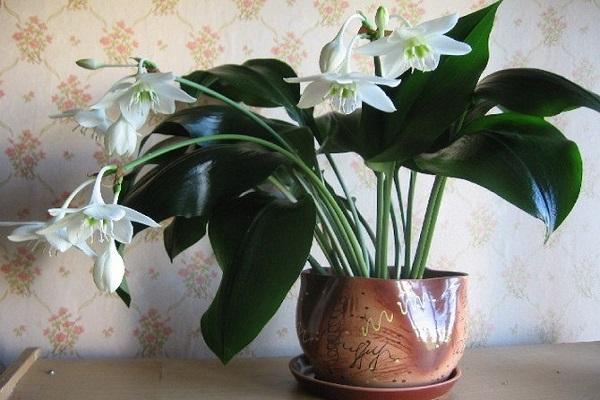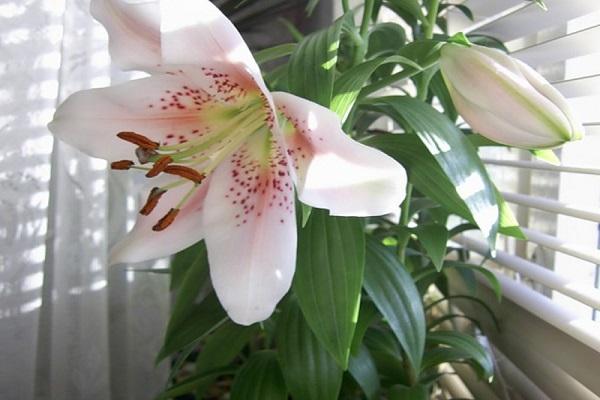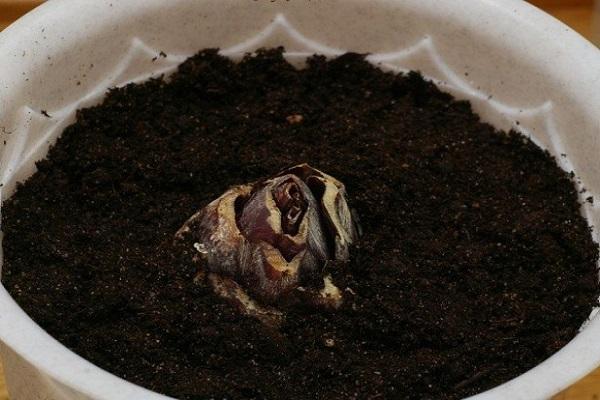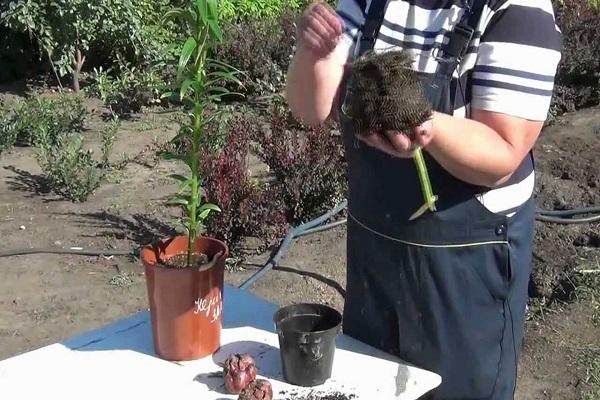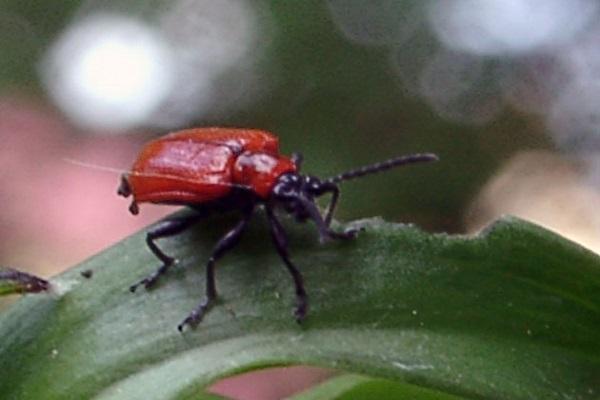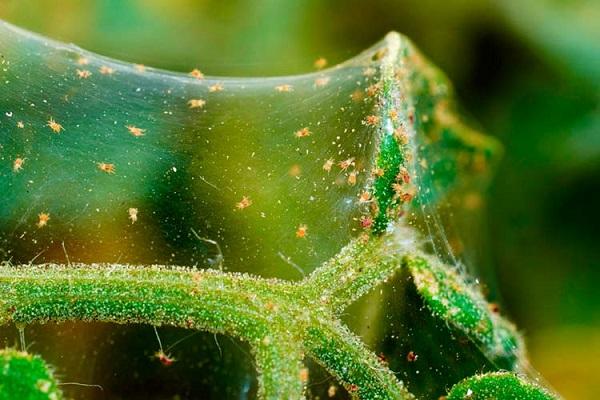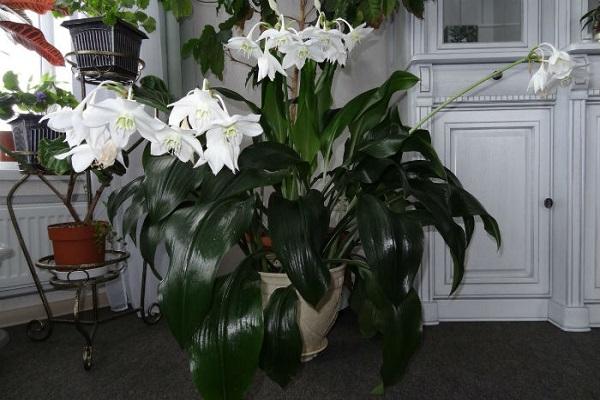When choosing a plant for home cultivation, men and women give preference to beautiful flowers and rich greenery. The lily intended for indoor keeping can boast of all these characteristics. The compact size does not in any way affect the desire to breed it at home.
- Is it possible to grow a lily at home in a pot?
- Varieties suitable for indoor growing
- The nuances of growing at home
- Selection of location and conditions of detention
- Preparation of planting material
- Instructions for landing
- How to care for a domestic lily during its growth period
- Lighting and temperature conditions
- Air humidity
- Watering lilies
- Trimming
- Fertilizer application
- How to replant an indoor lily?
- Diseases and pests of lilies
- Insects
- How to ensure a dormant period for lilies during the winter season?
Is it possible to grow a lily at home in a pot?
The answer is only positive. This is confirmed by many varieties that were bred for indoor growing. The flower pleases with its beauty standing on a windowsill or on a balcony or loggia.
Varieties suitable for indoor growing
The plant is classified according to the size of the flower and its shape:
- Flowers are cup-shaped, wide open. At home, the Empress of China, the Gilded Lily and the Beautiful Lily are grown. The Great Commander is considered one of the best.
- Funnel-shaped petals forming a tube. The varieties included in this group are characterized by a wide variety of colors. The petals change from pale yellow to bright orange.
- Bent petals. Compared to other species, the group is not distinguished by a large number of varieties. The most common representatives are dwarf lily and L. Citronella.
In the latter case, the potted plant has a small stem size. The flowers themselves reach 5 cm in diameter.
The nuances of growing at home
For a lily to bloom and please the eye, it needs good care. In turn, this depends on many small moments.
Selection of location and conditions of detention
Until green sprouts form, it is recommended to keep the flower in a dark place. In this case, the air temperature should not be high. If the green mass appears above the ground, the pot is taken to the windowsill or other suitable place. In summer they provide access to fresh air masses.
Preparation of planting material
Light fertile soil mixed with sand is the best soil for the plant. Before placing the bulb in the ground, it is hardened in the cold. A refrigerator door works well for this.If necessary, the material is soaked in potassium permanganate and dried.
Instructions for landing
The bottom of the container is covered with drainage, covering it with a nutritious soil mixture. After installing the bulb, the roots are straightened and covered with the same prepared soil on top. The pot is filled halfway, while part of the onion should be visible. As soon as the house lilies rise above the container, add more soil.
How to care for a domestic lily during its growth period
The key to normal development is proper care. A person must monitor not only soil moisture, but also maintain an acceptable temperature in the room. In autumn, indoor plants need increased lighting.
Lighting and temperature conditions
Lily prefers to receive light from the southwest or southeast. The houseplant loves diffused light. If there are no blinds on the windows, you can always place the container on a stand near the windowsill.
In spring and summer, flower care is simple. The plant feels great at average room temperatures. Able to survive hot days and slight cold snaps. Despite its hardening, frost can destroy it.
With the arrival of spring, lilies are moved outside. In this case, a balcony, veranda or even a garden plot will be suitable. Fresh air masses benefit the plant. An alternative to taking the flower outside is to periodically open the windows.
Air humidity
Lily does not need high air humidity. On hot days, water is sprayed around it. To remove dust and dirt from the leaves, wipe them with a damp cloth, cotton pad or sponge.
Watering lilies
The flower grows and develops in moist soil. If the plant does not receive proper watering and the soil often dries out, the flowering period does not occur.Good drainage prevents stagnation of water, which also negatively affects the lily.
Settled water at room temperature is suitable for watering the plant. Watering is carried out as the top layer of soil dries out.
Trimming
Withered flowers are not left on the shoots; they must be cut off. The procedure is necessary for the plant. Pruning promotes the appearance of new flowers and prevents the lily from wasting nutrients.
Fertilizer application
Saturating the soil with nutrients has a positive effect on lilies. Fertilizer application begins from the moment the stem is formed. In this case, organic or mineral fertilizers will come in handy. Special mixtures designed for lilies are also suitable.
Feed three times a month until buds appear. Then fertilization occurs only once every four weeks. To make the plant grow better, add wood ash to the pot.
How to replant an indoor lily?
The children are separated from the large onion, as they need to be placed in new containers. Before planting, the bulb is inspected, rotten spots are cut off, and the cut points are coated with activated carbon. To disinfect it, it is immersed in a solution of potassium permanganate. After this, it should dry on a paper towel.
The bulb is planted in new soil, adding fertilizers and nutrients. The transplant occurs according to the same scheme that was used during planting. A separate container is taken for each bulb.
Diseases and pests of lilies
The flower is sick due to improper care. The main mistakes people make when watering a plant. As a result of oversaturation of the soil with water, lilies become covered with rot. Red spots look unattractive and emit an unpleasant odor.
You can get rid of red spots of rot by trimming the damaged areas. The cut areas are treated with charcoal or activated carbon. After this, the intensity of watering is reduced. Otherwise, the bulb will deteriorate further.
The soil moisture must match the temperature of the room. Cold and frequent watering are a bad combination for a plant. If you do not pay attention to this problem, the flower will die.
Insects
In addition to diseases, people who grow lilies face a number of pests. The flower is afraid of such parasites:
- scale insect;
- spider mite
The scale insect has a round shape and a brown body color. It multiplies quickly, thanks to which it is capable of destroying the plant. The parasite lives not only on the green mass, but also on the pot and in the top layer of soil.
Getting rid of scale insects is not so easy. The insect often flies to neighboring plants, causing them to die as well. To destroy scale insects, folk remedies and chemicals are used.
If a lily becomes sick as a result of insect parasitism, it is isolated from other plants.
The indoor flower is also threatened by spider mites. The insect is difficult to notice in the initial stages of the disease. The parasite, like the scale insect, multiplies quickly. Requires immediate human treatment.
How to ensure a dormant period for lilies during the winter season?
Outdoor and indoor plants need rest. During the moment of “hibernation” they restore the strength spent during growth and flowering. Temporary dormancy ensures the lily will bloom again in the coming season.
The plant itself tells a person when it needs to be prepared for the dormant period. The stem turns yellow and the flowers wither and fall off. Over time, the stem and leaves dry out.This indicates that the lily no longer needs watering. The above-ground part of the plant transfers all accumulated substances to the bulb, and therefore dies.
The “root” of the flower is dug up and placed in a plastic bag. The place where the bulb is kept should be cool. The bag is often filled with sawdust for better storage.
Some gardeners leave the bulb in the ground and change the soil to new soil in the spring.
The indoor lily is one of the most beloved plants. Often decorates window sills, balconies or loggias of residential premises and offices. The plant is popular due to its large, richly colored flowers. The difference with the street counterpart is the size of the flower. But beauty depends on the care of a person.

